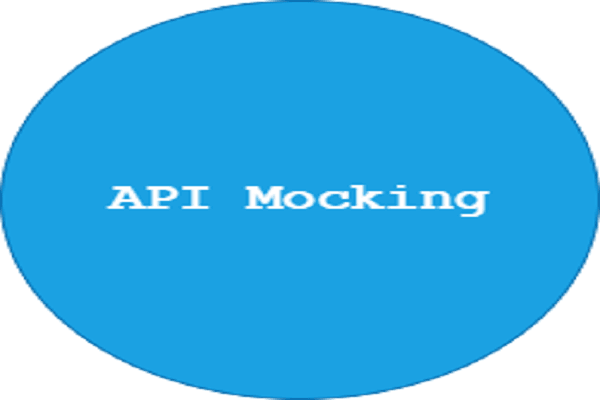API Mocking Tools and Best Practices

Mock Application Program Interfaces (APIs) are crucial in developing and testing apps. They help stimulate imitations of real APIs. Often, live data delays or its unavailability hampers the process of application development and testing. Hence, API mocking tools are necessary for simulating data as in the real world.
Besides, testing the code that you write can be a little challenging. It entails testing the code that also performs HTTP requests. Making actual requests during the testing process may yield unreliable results. Mocking solves this issue by facilitating testing at different levels, including the code, API, service, and infrastructure.
This article looks into API mocking and compares mock APIs to real backends. It also discusses the most popular and lesser-known API tools and frameworks, including their strengths and weaknesses.
An overview of API mocking
API mocking refers to imitations of the services and processes of a real API server to yield realistic mock API results for requests. Mock APIs recreate similar data representations as those displayed on data applications for real data. The objective is to simulate reality for precise assessment of the real-world applications of the software.
Developers are keen to use API mocking to virtually recreate and assess the functions of apps when deployed into the real world. You can interact with mock APIs the same way you would with real APIs. However, it is important to note that mocks do not provide authentic data interactions.
How does API mocking work?
Some modifications are necessary to recreate a simulation of the interactions of a created application or software with users. New software that behaves like an original API replaces the authentic version of the API. However, this new software lacks several functional and non-functional components of the real API. Thus, it can only simulate the results based on the requests but not produce the actual data picture.
A mock API server imitates a real API server to produce realistic API responses to the arriving requests. The responses can be static or dynamic and help mimic the actual data that a real API would return. Thus, the mock API system can then match the simulated data to the schema with objects, data types, and arrays to create a predictive picture of what would happen in a real API scenario.
Real backends vs. mock APIs
The primary difference between real backends and mock APIs is that the former relies on responses from a real API server while the latter imitates those responses. There are other different features between real backends and mock APIs as discussed below.
- Flexibility: Mock APIs are more flexible than real backends. Mocking API servers offer greater agility because they place the developer in control of their behavior. Real backends cannot guarantee similar flexibility because their development environment relies on external factors beyond the developer's control.
- External dependencies: API frameworks can work without external dependencies, but this is impossible for real backends.
- Redeployment time: The lightweight nature of mock APIs reduces their redeployment time compared to actual real backends.
- Maintenance costs: Mock APIs have higher maintenance costs to stay up-to-date. Real backends do not attract similar costs because there are no recurring costs.
- Functionality: Features for mock APIs tend to change over time as the developer adds new functionality. The process often entails restructuring the client code. These changes are uncommon when dealing with real backends.
- Speed: API mocks are quick to write, while real backends take a while to get the endpoints working as expected.
Why API mocking?
It is the dream of every developer team to create effective code. They want to design, test, and ship code in the most efficient way possible. That is why API mocking is critical because it guarantees those functions. Developers find it difficult to set up an efficient backend to do these tests and run their code. API mocking is their best alternative during the initial stages of application development.
Mock APIs are vital when live data is missing or unreliable during application development. They use simulations to recreate the real-world data for application programs. This enables developers to run tests, observe interactions between the users and the application, and determine its eventual functionality upon deployment.
Through mock APIs, developers can see the anticipated results for their requests and assess whether the application is functioning as expected. In that way, API mocking provides leeway for making changes to ensure that applications function optimally.
API mocking best practices
There are several API mocking best practices that you can follow to leverage the benefits of this concept. The most valuable ones are discussed below.
- The mock API should support the same schemas and transport protocols as a real API to stimulate more authentic results.
- A developer should use the mock API server to perform negative performance tests. These tests should stimulate unexpected errors to allow the API client to handle them early.
- You need to use mock APIs to facilitate continuous testing. You should mock the external dependencies and APIs to keep running tests regularly without the risk of tampering with those dependencies.
- Ensure that you modify your mock API to allow it to forward requests. Doing so enables you to partially replace the mocked operations with the real counterpart as required at any given moment.
API mocking frameworks and tools
WireMock
WireMock is a Java-based API mock framework. It helps you stay productive when the API you rely on is incomplete or absent. It is fast, reducing the time you need to build an app significantly. Its downside is that it is difficult to determine the actual response that it should create when working in the Frontend.
sMockin
sMockin is also a Java-based API mock framework. This development tool simulates API endpoints. It has a rich user interface that enables it to manage mocks quickly with or without code. However, it does not facilitate HTTP live feed. It also lacks the multi-user mode's Block, Mock, and Swap features. A user must manually add the proxy mappings during each installation, which is quite involving.
Mockbin
Mockbin is an API response generator. It has a cloud-based user interface, and it is simple and extensible. It does not require much coding to start except for some basic JavaScript code. It however has a high vulnerability which exposes its functionality to security vulnerabilities.
Mocky
Mocky is a simple API response mocking tool. It allows you to generate custom HTTP responses. The tool is vital when testing your Websocket client or requesting a build-in progress Websocket. This is is a free-to-use tool. However, it does not encrypt data at rest. Administrators can access all your mocks and even delete them without prior warning.
Mockoon
Mockoon is an API mocking tool. It has an efficient user interface and is built with JavaScript and Electron.js. Of all the mock APIS, Mockoon is the easiest and fastest to run locally. It does not need remote deployment. However, it lacks features to visualize the input and output data at each endpoint. Besides, it cannot carry out proxy passes.
Karate
Karate is an open-source tool that combines mocks, performance testing, and API test automation into one framework. It supports native JavaScript Object Notation (JSON) and is easy to start. Also, it requires little coding. But this tool lacks IntelliSense support in IDE. It is difficult to debug the code, and it uses its own scripting language.
Moq
Moq is a mocking framework for C#/.NET. It has a good design and a consistent interface. But it does not perform ordered expectations and only mocks interfaces and abstract members.
SoapUI Mocks
SoapUI is a popular mock tool when working with the start of authority (SOA) record services. Because it functions on an open-source code methodology, a developer can edit the code freely. It also offers transparency, which enhances technicalities of the tool among the developer community.
It is simple to use and allows for additional configuration to boost its speed. On its downside, SoapUI Mocks lacks support for Java Messaging Service (JMS). It also has some stability issues. Besides, its documentation requires further improvement to simplify it for first-time users.
Conclusion
If you are a developer, mock application program interfaces are one of your best resources. They are a critical part of your success in making effective and efficient apps. They simulate real-world scenarios to determine the functionality of apps and software. Thus, they enable developers to make crucial changes to the code before eventual deployment.
Mock APIs are making code testing easier every other day. They have become critical for progress in software and application development. There are several mock frameworks and tools that developers can use to improve the development process. The choice of an API mocking tool will depend on individual needs.
Happy learning!
Peer Review Contributions by: Onesmus Mbaabu











